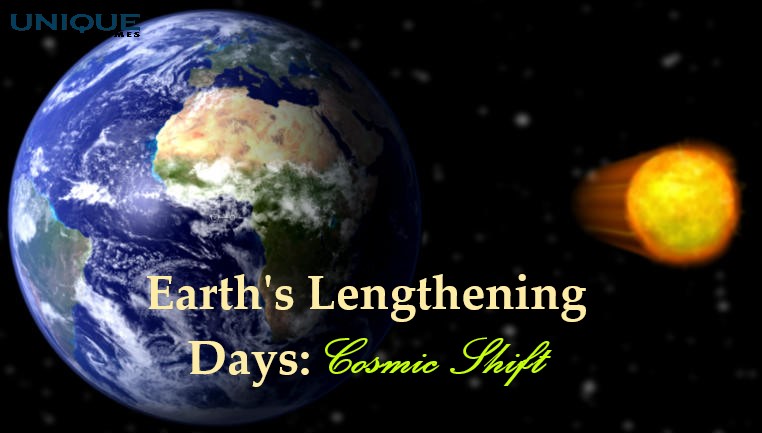Earth’s Slow Dance: The Lengthening of Days

Time, as marked by the Earth’s rotation, is a phenomenon that is both constant and ever-changing. While we often perceive days as unchanging units of 24 hours, the Earth’s rotation is gradually altering this perception. Over the course of centuries, Earth days are getting longer by a minuscule yet significant 1.7 milliseconds. In this blog, we embark on a journey to understand this subtle but fascinating phenomenon and the cosmic forces that drive the lengthening of our days.
The Dance of Rotation: The Essence of Days
The Earth’s rotation, the rhythmic movement that brings about day and night, is a fundamental aspect of our existence. It’s the dance of the planet as it turns on its axis, allowing different parts of the world to bask in sunlight and then be shrouded in darkness.
The Tug of Cosmic Forces: Gravitational Interactions
The lengthening of Earth days is the result of a complex interplay of cosmic forces. One of the driving factors is the gravitational interaction between the Earth and the Moon. As the Moon gradually moves away from our planet, it exerts a slight braking force, causing the Earth’s rotation to slow down.
The Law of Conservation of Angular Momentum
The concept of conservation of angular momentum comes into play when considering the Earth’s rotation. As the Earth’s rotation slows down, its angular momentum is conserved, and this redistribution affects the length of a day.
Time’s Subtle Shift: The Impact of 1.7 Milliseconds
While 1.7 milliseconds may seem insignificant, the cumulative effect over centuries becomes noteworthy. As Earth’s rotation slows down, the days gradually stretch, albeit imperceptibly, reshaping our perception of time itself.
The Cosmic Clock: Adapting to a Changing World
As Earth days grow slightly longer, humanity’s relationship with time remains steadfast. Our clocks and calendars continue to provide structure to our lives, even as the planet’s dance slows down.
Scientific Precision: Measuring Earth’s Rotation
The measurement of Earth’s rotation is a testament to scientific precision. Techniques like using atomic clocks and monitoring celestial events allow us to detect and quantify these minuscule changes in our planet’s rotation.
Unraveling the Cosmic Tapestry: Reflections on Change
The lengthening of Earth days invites us to ponder the broader tapestry of the cosmos. It’s a reminder that our planet is part of a dynamic system, subject to the influences of celestial bodies and the intricate forces that shape the universe.
The Beauty of Cosmic Complexity: Finding Wonder in Change
The lengthening of Earth days showcases the intricate beauty of the cosmos – the delicate interplay of forces that shape our world. It prompts us to embrace change as an integral part of the universe’s grand narrative.
Conclusion
As we go about our lives, the Earth’s rotation continues its slow evolution, gradually stretching the fabric of time itself. The lengthening of Earth days, driven by cosmic forces beyond our immediate perception, invites us to contemplate the fluidity of time and the ceaseless dance of the universe. As we look to the heavens and ponder the mysteries of our existence, let us find wonder in the subtle shifts that shape our world and remind us of the vastness of the cosmos.
Picture Courtesy: google/images are subject to copyright







